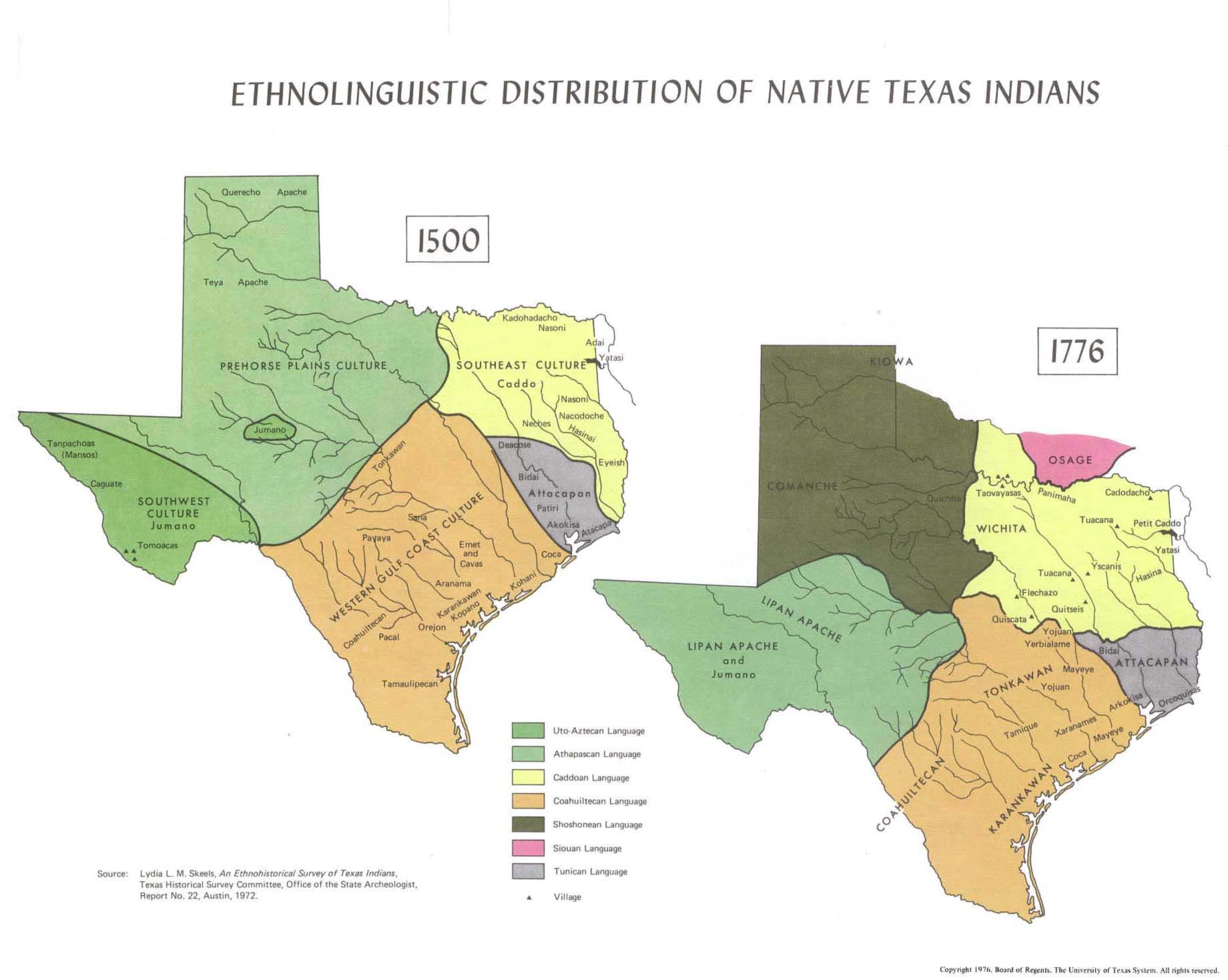2 Indigenous Languages of the Lower Rio Grande
These texts were collected by the Swiss linguist Albert Gatschet, who visited Reynosa and Rio Grande City in 1886 and spoke to elderly Native Americans in Cotoname and Carrizo communities in this region. These are among the few texts in the indigenous languages of the lower Rio Grande.
Emiterio’s narrative and a translation.
Miterio ipekio’t Reynosa vautisa’ra ax pehe-pola’m awaite’m año 1824; yen mo’s nahakme’m esto’k, Reynosa paka’m; yen te’ Tonia paplau’; ke’m na’wi apaikawai’ iwata’p; pekio’t kisha’x yawu’et makue’l; mahue’l paplau’ kica’x; 20 años ha paite’ paikie’m apaikie’; naña Selakampo’m apakamau’le ikamau’ apeha’l; Matamoros kleka’l to’m ikamau’ Tom Carrizo pakamau’le Salakampo’m.
“Emerito, baptized as a boy in Reynosa, I was born and they threw the water on me in the year 1824, my father was a poor Indian native of Reynosa, my mother Tonita died, four Pinto (Indians) fleeing, five little boys all died, 20 years later after he wished, I came/I went fighting the Comanche that I killed some around Matamoros, the Carrizo killed the Comanches.”
Emiterio, Rio Grande City, 1886.
“ Deer Hunting Song”
Kuana’ya we’mi kewa’naya we’me
We’wana kua’naya we’mi
E’we paskue’l pe-a-una’ma
Nuewa’na kuana’ya, kuana’ya we-mi
Nie’ e’we paskue’l pe’auna’ma
Kere nami. Nu’we seyota’-i-ye keren’mi
A’xpepola’mla
A’x melApe’l xi’
A’youe’l
Nawai’ na’wayo nawi’yawe nawa’peka
Ke’teseyo’ wne’ yawa’ye; ke’tso wana’ye, yeketso weni’gawa’ye
Yeke’rena wena’payo we’na yaw’ye ke’rena wen’ peyo we’na
Semeye’no weno’ weka’payo weno’
Newe ma’eyo’ wena newe mal’r eyo wena’
Pa-iwe’uni newe’ nleta’u pa’iwe-uni
Ewe’ yekerena’ wena’ pay o’n
Kuama’ mekayena, kuamane mekaye’na kuama mete’wela
Nuew’ nua’ya ma, nua’ya ma, nueno am’a nuekwo a’yami, nua’ya
Nueseme’ye peya-una-ma nuew’ wayaka’ma
Panayowe’n yowe’n panayowe’n yowe’n
Nuwe’ nuwa’yama’n kua’ya ma;ya
Newe’ semi’-eke peya-una’ma newe’ wa’I aka’ma
Newe’ ne’-ke senowe’ya payo’wera yenemer’ra
Payo’warewa p[a’yp waiye’ye ke’nema ew’e
Pakna’x klatai’
Newe newa’ya-imawe’ lenai’kwena’ mani’ newwaya’-imawi
Newe peke’lena kiau’ ananwe’wayi
Ke ma’rema pena’waye’ newe’ na’yowe. Emna pakueti’wak.
Partial Translation
(pieced together from Gatschet’s 1886 notes)
The deer walks, he doesn’t leave the monte
He doesn’t leave the monte
(The singer asks) “Leave the monte”!
In a pouring rain, the water slides
Cloud, clear the sky of water
Cactus flowers bloom, the deer goes by
Dancing, the deer goes by
Smelling the fragrant ground
The deer goes about the monte
Skipping above, the deer is alive
He is in the monte, not away, bending down to graze
The deer is alive, walking and looking
He does not leave the monte
The female deer’s call leads him away
With his tail up, he leaves the monte to the south
Now fallen on the plain, the deer looks down, he trumpets low
I make the deer call


